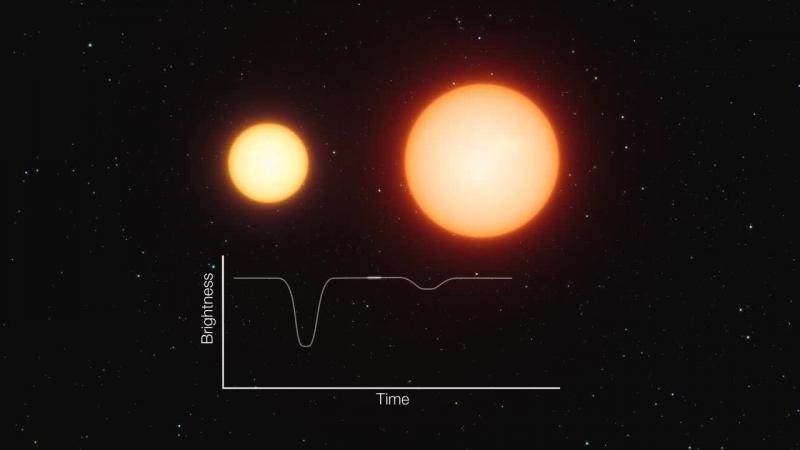2021 January 6
Observer’s Challenge – The Eclipses of Algol

January will provide several opportunities to follow the star Algol (beta Persei) through one of its eclipses, with the eclipse during the evening of Saturday 23rd January being the most conveniently timed.
Algol is a binary star system in which one star is significantly brighter than the other. With the orbit being edge on as seen from our line of sight, we get to see eclipses when the stars pass in front of each other. The most significant of these is the primary eclipse when the brighter star becomes hidden behind the fainter star and thus the overall brightness of Algol drops very obviously. Outside of eclipses, Algol is of magnitude +2.1, comparable in brightness with gamma Andromedae (mag +2.1), fainter than Alpha Persei (mag +1.8), but more noticeably brighter than epsilon Persei or gamma Persei (both mag +2.9). Around mid-eclipse, Algol becomes more comparable with epsilon Cassiopeiae (mag +3.3) and alpha Trianguli (mag +3.4), though still clearly brighter than kappa Persei (mag +3.8). You can follow the brightness changes by comparing the brightness of Algol with that of the stars listed above and which are shown on the accompanying star chart. Making a brightness estimate every 30 minutes or so should suffice.
The orbital period of the Algol system is a mere 2.87 days (approx. 69 hours). Eclipses last for approx. 10 hours, with the period of totality at mid-eclipse lasting for approx. 2 hours. On January 23rd, mid eclipse is predicted to occur at approx. 10pm. The eclipse will have just started when it gets dark that evening and the eclipse will be over by around 3am. If you are unable to observe this eclipse, there will be another one centred at around 7pm on January 26th for which Algol will already be close to minimum when twilight ends, but you will be able to follow its emergence from eclipse later in the evening. An earlier eclipse will be centred at around 1am during the night of January 20-21, but Algol’s decreasing altitude will make following the later stages of that eclipse more challenging.
If you would like to know a little more about observing variable stars, there is a BAA Tutorial by the Variable Stars Section’s Assistant Director, Roger Pickard here: https://www.britastro.org/node/18890
Tracie Louise Heywood
| The British Astronomical Association supports amateur astronomers around the UK and the rest of the world. Find out more about the BAA or join us. |

